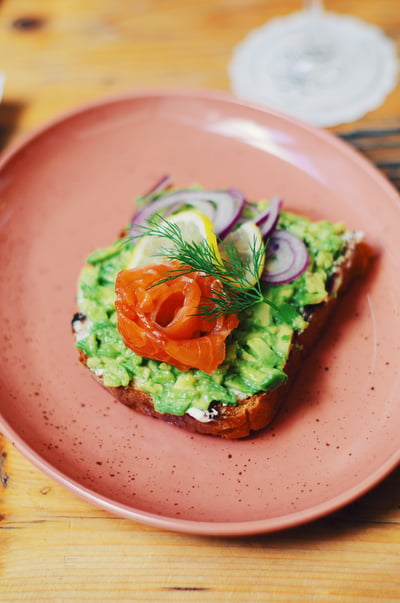
Nutrition is an evolving science. We now know that not all fats are bad for us, and foods once considered healthy, like yogurt, may not meet this criteria if they contain too much added sugar.
This is the impetus behind the Food and Drug Administration’s proposal to update the definition of what foods can claim to be “healthy” on their packaging.
The biggest culprits in preventing food-related diseases such as obesity, diabetes, heart disease and certain cancers in the American diet remain getting too much added sugars, saturated fat and sodium, while not getting enough fruits and vegetables, low-fat dairy and whole grains.
One can argue you do not need to label asparagus as “healthy” since all fruits and vegetables are inherently so. Previously foods like nuts and seeds, fatty fish (like salmon) or olive oil, would not have met the definition of healthy due to fat content, but we now know these foods can be part of a healthy dietary pattern. Hence the need for updated guidelines. The current definition of “healthy”, last updated in 2016, also omitted a limit on added sugars.
How Can Products Meet the New "Healthy" Claim?
The new proposed definition, announced on September 28, outlined that in order to be labeled with a “healthy” claim on food packaging, products need to:
- Contain a certain meaningful amount of food from at least one of the food groups or subgroups (e.g., fruit, vegetable, dairy, etc.) recommended by the Dietary Guidelines.
- Adhere to specific limits for certain nutrients, such as saturated fat, sodium and added sugars. The threshold for the limits is based on a percent of the Daily Value (DV) for the nutrient and varies depending on the food and food group. The limit for sodium is 10% of the DV per serving (230 milligrams per serving).
As an example, a serving of cereal must contain ¾ ounces of whole grains, no more than 1 gram saturated fat, 230 mg or less of sodium, and no more than 2.5 grams of added sugar in order to be considered healthy.
So, while granola may seem healthy, the reality is that most major brands contain twice the saturated fat and five-times the added sugar allowed under this new definition.
Conversely, foods like avocados, nuts, and fatty fish can now be labeled “healthy” under the new guidelines because they contain cardio-protective fats, and are low in saturated fat. The agency is also exploring the development of a symbol to help consumers easily identify foods that meet the “healthy” claim criteria.
Implications for Food Manufacturers
The proposed rule is now out for comment, and could take a year or more before being put into effect, similar to the FDA’s move last year to get restaurants and manufacturers to reduce sodium. In the meantime, food manufacturers may want to be careful about making new “healthy” claims on product labels. Manufacturers should also review their current product labeling and website information to understand how current “healthy” claims they have may need to change given the FDA’s proposed definition.
For some foods, the new definition may allow them to capitalize on consumer interest in more healthful foods, such as nuts. The California Walnut Board and Commission said in a statement that it was glad to see the FDA is including nuts as “healthy” foods, especially since they already qualify for a heart health claim.
Emily Metz, president and CEO of the American Egg Board, also said in a statement that including eggs as “healthy” food is good news, as it “affirms the science showing that eggs are an all-around nutrient powerhouse.”
Stay up to date on the latest insights for food manufacturers by signing up for our newsletter, The Front Burner. Our biweekly newsletter curates the juiciest tidbits of news and best practices at the intersection of food and marketing so you always have the latest and greatest info and inspo.